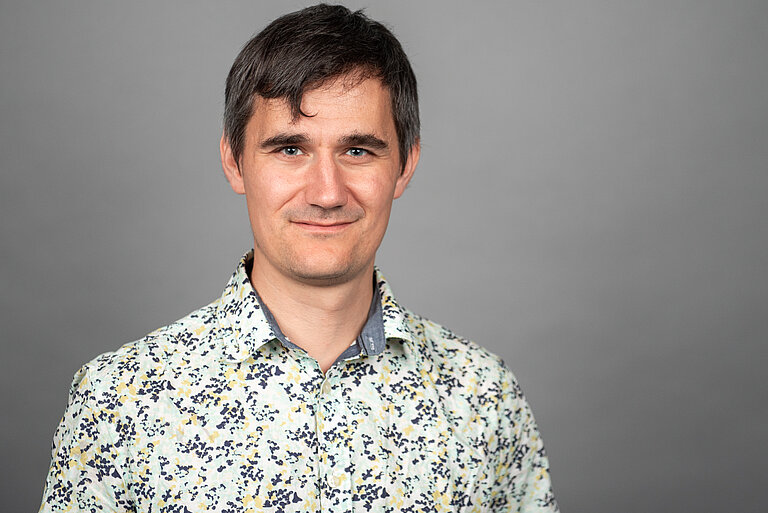The ERC-funded project EPIDEMIC will analyze the whole genomes of 500 victims of the Black Death, one of the most devastating outbreaks of infectious disease in human history which killed up to half of the Medieval European population. Harald Ringbauer and his team aim to identify common genetic variants in Black Death victims that determine genetic susceptibility to this often fatal disease. The Black Death offers the research group a unique opportunity to deepen our understanding of how such genetic traits mix and change over generations and how infections drive these changes. Moreover, by linking these Medieval with modern genomes across Europe using innovative new analytical tools, the researchers aim to map the movement of genes and genealogies over the centuries in unprecedented detail.
Unlocking the secrets of Black Death victims‘ genomes
Over the past decade, ancient DNA researchers have studied the genetic data of more than 10,000 ancient humans. This wealth of new data has revealed completely new insights into how large groups of past people mixed and changed over time and how certain genetic traits were selected over others. However, understanding recent genetic changes in populations where individuals have constantly moved geographically, such as in Medieval and modern Europe, remains challenging because of methodological limitations and limited access to historical ancient DNA.
"However, it is crucial to expand our knowledge of recent fine-scale human population history to better understand why certain diseases are more common in some modern groups than in others and to be able to link changes in specific genes to the exposures that led to those changes," says project leader Harald Ringbauer. This critical gap becomes evident in studies focusing on the Black Death - the deadly first wave of the Medieval plague that killed millions in Europe in the 14th century. While there is evidence that the Black Death triggered lasting changes in our immune system genes that are still relevant today, intense disagreement among experts over how to interpret the sparse data prevents a firm understanding of the plague's broader impact on the human genome.
Investigating disease susceptibility and resistance
To fill these gaps, Ringbauer and his team will sequence and study the genomes of 500 Black Death victims from St. Pölten, Austria. Excavations in the city's Cathedral Square lasted nearly a decade and unearthed a vast Medieval graveyard with nearly 22,500 skeletons. More than 500 of these individuals were buried in three mysterious mass graves. Researchers at MPI EVA recently revealed the cause of their deaths – in the human remains they identified the DNA of Yersinia pestis, matching the exact strain that caused the first wave of the plague. "Our first major goal is to use this unique opportunity of a large number of now proven Black Death victims to better understand how these individuals, who all died in 1350, relate to people living across Europe today," says Ringbauer. "New computational tools will allow us to dig into the past and link this generation of Medieval people to modern Europeans, and to explore fine-scale population structure and demography over the centuries."
As a second major goal, by studying the genomes of Black Death victims, the team hopes to identify specific genetic traits associated with increased susceptibility or, conversely, resistance to the disease. "Genetic variants that increase the risk of a lethal outcome of a Black Death infection will be enriched in the genomes of the 500 victims. The large sample size allows us to find these variants and, for the first time, to robustly investigate the direct impact of the Black Death on human genetics and potentially uncover important genetic information relevant to current and future disease outbreaks," Ringbauer concludes. To achieve this goal, the genomic research team will continue its close collaboration with Ronald Risy, the city archaeologist at St. Pölten who led the excavations, and Fabian Kanz, an anthropologist and professor at the Medical University of Vienna, whose team will generate relevant contextual data for the Black Death victims based on the analysis of their skeletons - such as age and nutritional status
###
Harald Ringbauer received his Ph.D. in Population Genetics from the Institute of Science and Technology Austria in 2018. He then held postdoctoral positions in the lab of John Novembre in the Department of Human Genetics at the University of Chicago and in the lab of David Reich in the Department of Human Biology and Evolution at Harvard University, specializing on the population genetic analysis of (ancient) human DNA. Since 2021, Ringbauer has been a research group leader in the Department of Archaeogenetics at the Max Planck Institute for Evolutionary Anthropology in Leipzig, Germany, where he and his team develop new computational methods to study ancient genomes.
###
The European Research Council (ERC) has announced the award of 494 Starting Grants to young scientists and scholars across Europe. The funding - totalling nearly €780 million - supports cutting-edge research in a wide range of fields, from life sciences and physics to social sciences and humanities. It will help researchers at the beginning of their careers to launch their own projects, form their teams and pursue their most promising ideas.
Contact:
Dr. Harald Ringbauer
Group Leader, Computational Population Genomics
Department of Archaeogenetics
Max Planck Institute for Evolutionary Anthropology, Leipzig
harald_ringbauer@[>>> Please remove the text! <<<]eva.mpg.de
Sandra Jacob
Press Officer
Max Planck Institute for Evolutionary Anthropology, Leipzig
+49 341 3550-122
jacob@[>>> Please remove the text! <<<]eva.mpg.de
